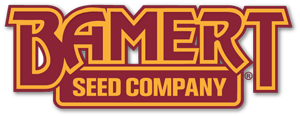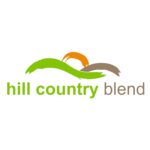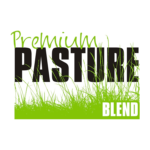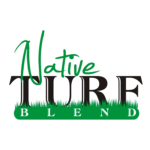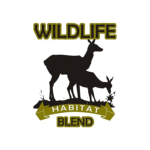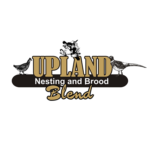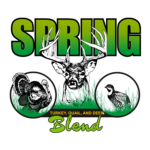Reclamation Seeding Guide 2020
Our Story

With seven decades of experience, a team armed with real-world strategies and a plethora of knowledge, our own production fields and a state-of-the-art seed cleaning facility, Bamert Seed is ready to meet your every need.
Bamert Seed Company was established in 1951. With practice, care, and determination, we are now a leading conservation partner. As an industry leader, Bamert Seed Company provides seed and consultations to landowners and land managers for reclamation, restoration, conservation, and wildlife habitat enhancements. Our arid climate and supplemental irrigation provide excellent growing conditions to produce the highest quality native seed on the market.
Bamert Seed Company’s dedication to providing the best has allowed us to offer over 400 species of high-quality native grasses, forbs, and legumes. The species and varieties we produce have been carefully selected to match the soil and climatic conditions of the Southern Great Plains and beyond, making them adaptable to most areas in the Southern US. Our seed has a wide variety of uses including reclamation,
prairie restoration, pollinator habitat, DOT projects, conservation programs, wildlife habitat, and wildlife food plots. Our people and processes allow us to have great confidence in our product.
Value Added Services
Consult with our specialists for custom blend development and proper planting techniques.
If your desired species is not listed, please call for availability!
Adapted varieties and local ecotype specific releases available for your area.
• Most orders shipped in 24 hours.
• FREE custom blending.
Reclamation Blends
Deluxe Prairie Blend
(25 to 45 in. annual rainfall)
Planting rate 10 lb. / acre
Sideoats ……………..25%
Little Bluestem……..25%
Indiangrass ………. 17.5%
Green Sprangletop…10%
Switchgrass …………10%
Sand Lovegrass……7.5%
Big Bluestem………….5%
Hill Country Blend
Planting rate 10 lb. / acre
Sideoats Grama…….25%
Switchgrass …………15%
Buffalograss ………..20%
Green Sprangletop…10%
Indiangrass ………….10%
Little Bluestem……..10%
Canada Wildrye …….10%
Quick Cover Blend
Planting rate 10 lb. / acre
Sand Lovegrass…….50%
Sand Dropseed……..25%
Green Sprangletop…25%
Steep Slope Blend
Planting rate 25 lb. / acre
Annual Cereal Rye …40%
Annual Ryegrass……20%
Bermudagrass………20%
Sand Lovegrass…….12%
Sand Dropseed……….8%
Premium Pasture Blend
(Less than 25 in. annual rainfall)
Planting rate 10 lb. / acre
Sideoats ……………..30%
Green Sprangletop…30%
Buffalograss …….. 12.5%
Bristlegrass………. 12.5%
Blue Grama ……………5%
Switchgrass …………..5%
Western Wheatgrass..5%
Right of Way Blend
Planting rate 20 lb. / acre
Ryegrass (Annual) …40%
Millet ………………….10%
Sideoats ……………..10%
Green Sprangletop..7.5%
Bristlegrass………….10%
Western Wheatgrass 10%
Buffalograss ………..10%
Blue Grama …………2.5%
Tank Dam Blend
Planting rate 10 lb. / acre
Sand Dropseed……..10%
Kleingrass……………25%
Sand Lovegrass……7.5%
Sideoats ……………..15%
Green Sprangletop…10%
Annual Ryegrass……10%
Canada Wildrye ………5%
Tall Wheatgrass, Jose 15%
Hooded Windmillgrass.2.5%
Native Turf Blend
Planting rate, landscape
2 lb. / 1,000 sq. ft.
Planting rate, pasture 30 lb. / acre
Buffalograss ………..67%
Blue Grama ………….33%
Wildlife Blends
Wildlife Habitat Blend
Planting rate 8 lb. / acre
Sideoats …………18.75%
Big Bluestem……..12.5%
Little Bluestem…..12.5%
Alfalfa………………9.37%
Partidge Pea ……..9.38%
Canada Wildrye ….6.25%
Engelmann Daisy.. 6.25%
Illinois Bundleflower ..6.25%
Sand Lovegrass…. 6.25%
Switchgrass ……… 6.25%
Blackeyed Susan .. 3.13%
Purple Prairie Clover..3.13%
Upland Nesting & Brood Blend
Planting rate 8 lb. / acre
Little Bluestem……..25%
Switchgrass …….18.75%
Canada Wildrye ….12.5%
Alfalfa………………6.25%
Sideoats …………..6.25%
Engelmann Daisy..6.25%
Illinois Bundleflower ..6.25%
Sand Lovegrass…. 6.25%
Blackeyed Susan .. 3.13%
Partridge Pea ……. 3.13%
Maximillian Sunflower 3.13%
Purple Prairie Clover..3.13%
Native Treats Blend
Planting rate 8 lb. / acre
Illinois Bundleflower ..50%
Engelmann Daisy..12.5%
Partidge Pea ……..12.5%
Purple Prairie Clover..12.5%
Blackeyed Susan .. 6.25%
Maximillian Sunflower 6.25%
Spring Turkey, Quail & Deer
Blend
Planting rate 10 lb. / acre
Millet ………………….20%
Sweeter N Honey Sp.20%
Small Black Sunflower . 15%
Grain Sorghum ……..10%
Yellow Clover ……….10%
Blackeyed Pea………..5%
Engelmann Daisy…….5%
Iron and Clay Pea ……5%
Red Ripper Pea……….5%
Wooly Croton………….5%
Rack ‘em & Rut ‘em Superior Fall
Food Plot Blend
Planting rate 50 lb. / acre
Oats……………………19%
Wheat………………12.5%
Rye ………………….18.5%
Triticale ……………12.5%
Annual Ryegrass…..7.5%
Purple Turnips ………..5%
Arrowleaf Clover…..7.5%
Hairy Vetch ……………5%
Austrian Winter Pea 7.5%
Alfalfa…………………..5%
Wildflower Blends
Blue Flax • Rocket Larkspur • Annual Lupine • African Daisy
Baby’s Breath • Clarkia • Corn Poppy • Godetia • Columbine
Money Plant • Lance Leaved Coreopsis • Yellow Prairie
Coneflower • Sensation Mix Cosmos • Chinese Forget-Me-Not
Black-Eyed Susan • Bearded Dianthus • Purple Coneflower
California Poppy • Plains Coreopsis • Sweet Alyssum • Shasta
Daisy • Scarlet Flax • Sweet William • White Yarrow • Indian Blanket
Strawflower • Gay feather • Bachelor Button • Annual Mallow
Perennial Lupine • Siberian Wallflower • California Poppy
Annual Candytuft • Rocket Larkspur • Sweet Alyssum
Black-Eyed Susan • Blue Flax • Scarlet Flax • Gayfeather
Showy Milkweed • Lemon Mint • Dwarf Godetia • Purple
Coneflower • Perennial Gaillardia • Dwarf Coneflower
Annual Gaillardia • Dwarf Red Coneflower • Dwarf Plains
Coreopsis • Lance Leaved Coreopsis
Texas Native Seeds
Brewster Germplasm Sideoats Grama
 Planting Rate: 5-10 pounds PLS per acre
Planting Rate: 5-10 pounds PLS per acre
Latin Name: Bouteloua curtipendula (Michx.)
Details:
- Sideoats grama is a warm-season, native, perennial bunchgrass that grows 3-4 feet tall.
- The plants produce seed from May through October in west Texas.
- Blend of two native populations collected in Brewster and Terrell Counties of west Texas.
- Has superior plant vigor, seed production, and biomass production compared to available sideoats grama releases when grown in west Texas.
- Sideoats grama produces abundant forage for all classes of livestock and is an important source of cover and food for quail and other wildlife in west Texas.
- Because of the plant’s stature and fast-growing seedlings, it has good competitive ability with many non-native grasses.
- Stands should not be grazed in the panting year to allow adequate rootstock development.
- Long-lived perennial that is extremely drought and fire tolerant once established.
Santiago Germplasm Silver Bluestem
 Planting Rate: 1-2 pounds PLS per acre
Planting Rate: 1-2 pounds PLS per acre
Latin Name: Bothriochloa laguroides (DC) Hert ssp. Torreyana (Steud.) Allred and Gould
Details:
- Santiago Germplasm Silver Bluestem is a warm season, clumping perennial.
- Foliage is 12 to 18 inches and can be green to blue-green in color. Inflorescence is silvery-white.
- Includes three distinct populations of silver bluestem, each increased in isolation to maintain genetic diversity of the wild populations.
- Recommended for revegetation, roadside plantings, erosion control, and for rangeland seeding mixes.
- Easily reestablished after drought, overgrazing, or surface disturbance.
- Performs well in well-drained soils across a wide variety of soil textures. Not suited for planting in moist sites.
- Areas planted to Santiago Germplasm should be deferred from grazing until plants are well established.
- No severe insect or disease problems have been observed in silver bluestem once established.
Permian Germplasm Whiplash Pappusgrass
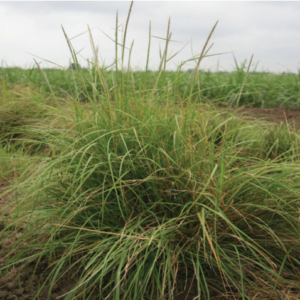 Planting Rate: 2-3 pounds PLS per acre
Planting Rate: 2-3 pounds PLS per acre
Latin Name: Pappophorum vaginatum (Buckley)
Details:
- Includes four distinct populations of whiplash pappusgrass, each increased in insolation to maintain genetic diversity of the wild populations.
- Features green foliage with a white-colored spikelet.
- In West Texas, it will grow 3-5 feet tall and will produce seed continuously from May to first frost.
- Recommended for critical site revegetation, roadside plantings, erosion control, and for inclusion in range seeding mixes.
- Provides quick cover in loam and clay loam soils.
- Areas planted to Permian Germplasm should be deferred from grazing until plants are well established.
- No severe insect or disease problems have been observed in whiplash pappusgrass once established.
Atascosa Germplasm Texas Grama
 Planting Rate: 10-15 pounds PLS per acre
Planting Rate: 10-15 pounds PLS per acre
Latin Name: Bouteloua rigidiseta Steud.
Details:
- Blend of four collections from the Rio Grande Plains of Texas.
- Native to southern Texas.
- The low-growing, dense bunchgrass grows 1-2.5 feet in height and produces multiple heads, each bearing a spike containing 5-14 seed spikes with 3-5 seeds per spike.
- Will flower and produce seed throughout the year and frequently reseeds itself.
- Was developed for use in highway right-of-way seeding, native rangeland restoration, and wildlife plantings in the Rio Grande Plains of Texas.
- Will persist on sand, sandy loam, clay, and clay loam soil types.
- Fast seed production, establishment, and spreading habit make it an excellent planting choice for highly disturbed sites like highway right of ways or area susceptible to erosion.
- Should be allowed to set seed yearly to ensure vigorous stands.
- Mowing or burning old growth while dormant helps to stimulate seed and forage production. Can be mowed 4-6 inches without adverse effects.
- Poor grazing value.
Mariah Germplasm Hooded Windmillgrass
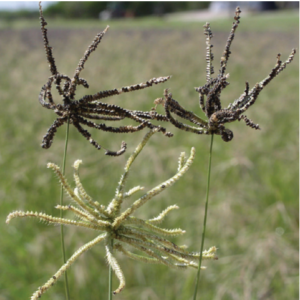 Planting Rate: 1/3 to 2/3 pounds PLS per acre
Planting Rate: 1/3 to 2/3 pounds PLS per acre
Latin Name: Chloris cucullata Bisch.
Details:
- Hooded windmillgrass is a native, perennial bunchgrass with a mature foliage height ranging from 0.5-1 foot.
- Produces seed heads from May through October.
- Unlike most hooded windmillgrass populations, Mariah Germplasm also spread vegetatively by stolons.
- Recommended for use in roadside plantings, critical site revegetation, and rangeland seed mixes.
- Can be used in many types of conservation plantings, such as grassed waterways, riparian buffers, filter strips, and pond embankments.
Welder Germplasm Shortspike Windmillgrass
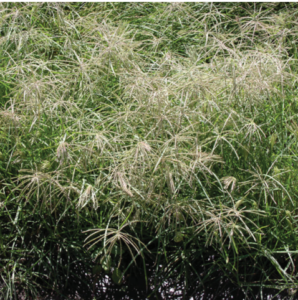 Planting Rate: 1/4 to 1/2 pounds PLS
Planting Rate: 1/4 to 1/2 pounds PLS
Latin Name: Chlorix x subdolichostachya Muell. (pro sp.) [cucullata x verticillata]
Details:
- Shortspike windmillgrass is a naturally occuring hybrid between the native grasses Chloris cucullata and Chloris verticillata.
- Perennial grass that produces seed and also spreads vegetatively by stolons.
- Mature foliage height ranges from 1-3 feet tall.
- May produce seed heads from May to October, but most of the seed is produced in September and October.
- Recommended for use in roadside plantings, critical site revegetation, and rangeland seed mixes.
- Can be used in many types of conservation plantings, such as grassed waterways, riparian buffers, filter strips, and pond embankments.
Chaparral Germplasm Hairy Grama
 Planting Rate: 1-2 pounds PLS
Planting Rate: 1-2 pounds PLS
Latin Name: Bouteloua hirsuta Lab. var. hirsuta
Details:
- Adapted to the South Texas area.
- Low-growing, dense bunchgrass that grows 1-2.5 feet tall.
- Plants produce multiple seed heads, each bearing a spike containing 18-70 seeds.
- Will flower and produce seeds throughout the year.
- Developed for use in highway rights-of-way seeding, native rangeland restoration, and wildlife plantings in the Rio Grande Plains of Texas.
- Plantings should be deferred from grazing or disturbance for 1 year after planting.
- Good to fair grazing value, depending on range site and soil type.
- Mowing or burning old growth while dormant helps to stimulate seed and forage production. Can be mowed to 4 inches with no adverse effects.
Bamert Seed is proud to be a licensed grower of Texas Native Seeds. Please call or visit our website for availability of species not listed.

We Will Be Competitive!
Seed Locally Adapted to Your Area
- Pipeline ROW
- Power Line ROW
- Solar Farms
- Wind Farms
- Pad Site Reclamation
- Wildlife Habitat
- Prairie Restoration
- Soil-Type-Specific Blends
Most seeds are harvested and processed in our state-of-the-art facility for top quality assurance.

